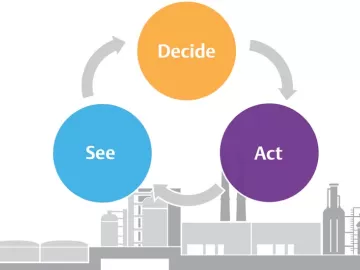Missed Demand-Side Opportunities Part 5 - Think Inside the Box to Achieve Savings with Cooling of Control Enclosures
In this ongoing column, we share insights into technologies that offer the opportunity to affordably and easily lower compressed air use and generate energy savings – all while achieving relatively quick payback. But finding these technologies on the production floor isn’t always easy or straightforward. In fact, there are many times when a technological solution is far less than obvious. Such is the case with cooling of control enclosures, which represent a significant area for high-energy savings with little upfront investment. Here is some out-of-the-box thinking… check that… inside-the-box thinking… for optimizing control of enclosure cooling and coming out ahead.




